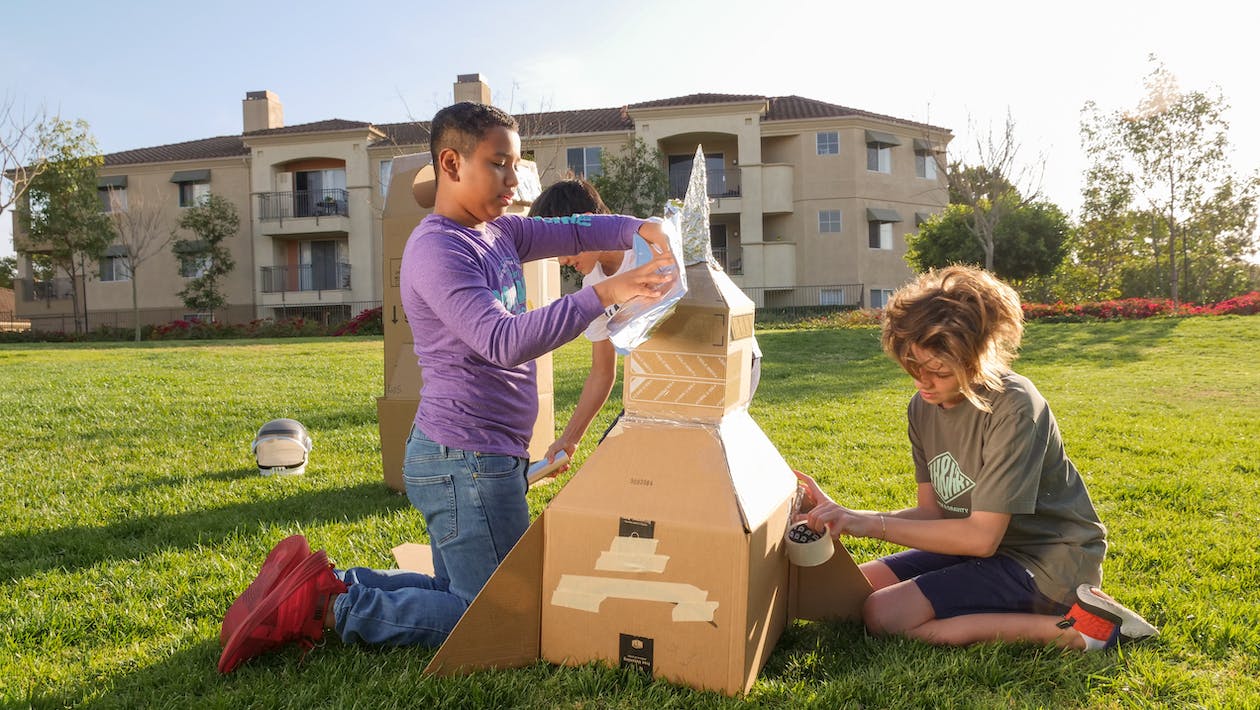Introduction
Raising children in the digital age where smartphones, tablets, and social media become modern-day toys is no easy task. While they have also become useful tools for learning, we can’t help but be concerned when our kids are glued to their screens for hours. Are they still getting enough sleep and exercise? Do they still spend quality time with friends? Or enjoy non-screen activities? As parents, questioning how much is too much screen time and how we can calmly address this issue with our children can be a common dilemma. But do not worry! We are here to offer you guidance in this digital maze and teach you how to balance screen time while keeping your kid in touch with the offline world.
Set Clear Boundaries and Rules
To successfully navigate the digital realm and balance your children’s screen time, we must first draw the line and set a reasonable schedule. Just as we have assigned playtimes, mealtimes, and bedtimes, it is also necessary and possible to have specific screen time periods for the day. Since it is less likely or even impossible to take gadgets away from them for good, we can aim to shorten their screen time sessions and let them take regular breaks. This way, they can get the chance to get up and move around, have enough rest, and maintain their overall health. You can set a timer for breaks, let them do physical/outdoor activities or even a nap. Getting enough sleep is the most important, so make sure they’re no longer peeking through their phones during bedtime.
Aside from setting a schedule, other rules or things you may want to consider could be:
1. The Place – You might think it would be better not to use gadgets around the kitchen or the car.
2. The Time – Perhaps you can make screen time off limits during mealtimes to enjoy food and family time, or no gadgets before homework or chores are all accomplished. You can also offer additional screen time as a bonus for getting a job well done.
3. The Content or Application – Some content can be upsetting and inappropriate across different ages, you can make sure they are not getting exposed to it, especially on social media. Are there certain games, series, or movies they might not be allowed to watch at their age? Take note of this and calmly explain what content they can and cannot engage in and why.
Let Kids Engage in Creativity Beyond Screens
Who says your kids can’t have fun outside their screens? Even before the internet, social media, and gadgets became a trend, we already had a long list of fun activities to do that are not only guaranteed to be exciting, but can also nurture creativity, imagination, and other skills that are good for brain development. [2] Kids can get to know more about themselves and explore their talents through creative activities like the following:
- Drawing or Sketching
- Crafting (Paper dolls, origamis, cardboard houses)
- Coloring or Painting
- Writing short stories
- Building model airplanes, ships, or other toys
- Making Crochets
- Baking and designing pastries like cupcakes
- Playing with building blocks
- Puppet shows or Story Roleplays
- Making a scrapbook or journal
These are just to name a few, but feel free to add more to the list and explore other activities which you can let your children do alone, with friends, or with you and the rest of the family! Think of what will not only keep them busy but will also develop their critical thinking skills.
Make time for Physical and Outdoor Activities
Now, more than just exercising creativity, imagination, and critical thinking skills, it’s also important to get those muscles and bones worked up and stretching! So, let your kids run along the field and play outdoors! Not only is this important in taking care of your child’s physical health, but it also works as a natural way to balance screen time in children. There are lots of fun games and activities your children can enjoy outdoors that cannot be offered by the digital world, like playing a game of tag, riding bikes and go-karts, or playing soccer and other sports! What’s more, is that you and your family and friends can join in the fun which makes it a win-win situation for all of you.
Other activities that are great for the outdoors and strengthen the bond between your children and the rest of the family could be volunteering, planting a vegetable garden, growing flowers, hiking, and even stargazing. These activities or similar ones you could think of can teach them valuable life skills, and become memories you can cherish as a family.
Openly Communicate and Monitor Activity
But of course, more than just setting rules and schedules, parents must practice openly communicating to their children about why there is a need to balance screen time in the first place. Tell them the importance of balancing screen time at their age and how too much can affect their well-being. If they ask questions, answer them honestly and always lend an ear whenever they raise their thoughts and concerns. If possible, you can even get them involved in deciding on screen time rules and schedules so you can create a plan that works for everyone.
But how do we make sure that they are following screen time rules especially when we are busy or working? Thankfully, we can easily turn to digital apps for this one with the presence of certain control tools or third-party apps available on your smartphone’s app store which can help you monitor your kid’s screen time including their usage or activities, setting time limits, and filtering what content or apps they can use.This might sound like you’re doing surveillance, but at the end of the day, you’re just fostering responsible tech use and managing their screen time while they’re young and still need guidance. If you have extra time, you can lighten up the mood by having virtual playdates with them where you can watch movies, educational content, or play games together.
Lead by Example
Most importantly, in managing your child’s screen time, you are the captain of the ship. Your child will tend to observe and follow your screen time habits as well. So it is important to show them good screen time habits starting from yourself because doing so will likely lessen the chances of them arguing with you if you can’t do the same. Not only will this encourage your children to follow your screen time rules and schedules, but you can also have the opportunity to balance your screen time and spend more quality time with family and doing other activities.
Conclusion
With these tips, you are ready to take on the challenge of finding the perfect balance between your children’s screen time and their off-screen adventures. Remember, that the goal is not to remove screen time entirely, but to embrace them mindfully. Through setting boundaries, open communication, creating alternatives, and educating yourself about technology, you can raise responsible tech-savvy kiddos!
References
[1] Sheldon-Dean, H., Anderson, D., PhD, & PsyD, S. a. L. (2023). How to set limits on Screen Time. Child Mind Institute. https://childmind.org/article/screen-time-during-the-coronavirus-crisis/
[2] Screen time and digital technology use for children 6-11 years: tips for balance. (2022, October 27). Raising Children Network. https://raisingchildren.net.au/school-age/play-media-technology/screen-time-healthy-screen-use/healthy-screen-time-6-11-years
[3] Uadmin. (2023, February 6). How to balance children’s screen time during the pandemic. CORP-MAT1 (TEACH). https://teach.com/resources/tips-for-balancing-childrens-screen-time/
[4] Balancing Screen Time. (n.d.). Internet Matters. https://www.internetmatters.org/wp-content/uploads/2019/08/Internet-Matters-Guide-Balancing-Screen-Time-5-7-KeyStage1.pdf





